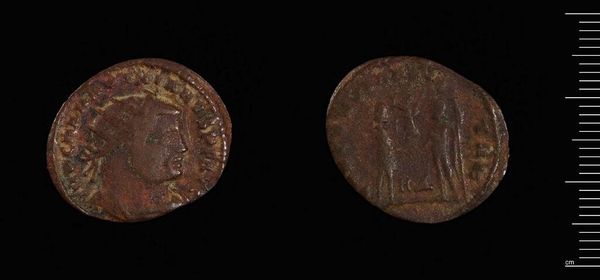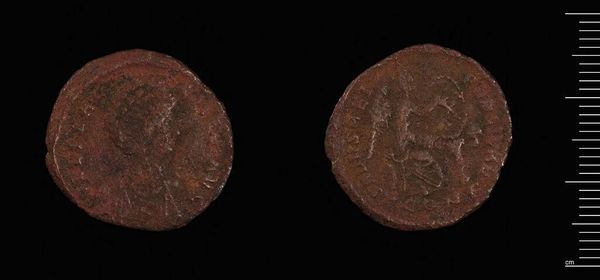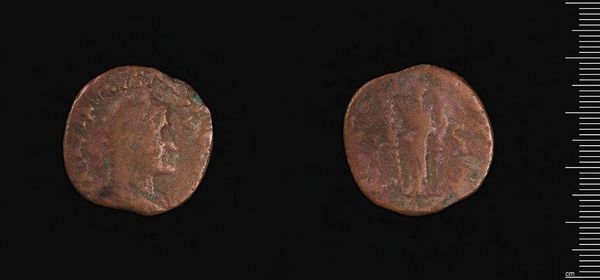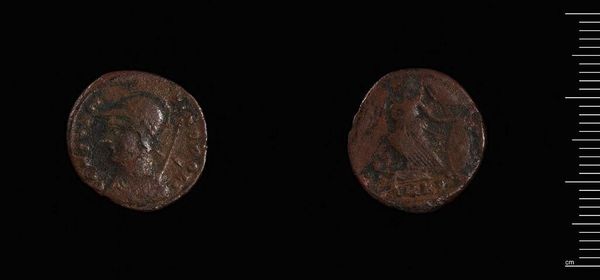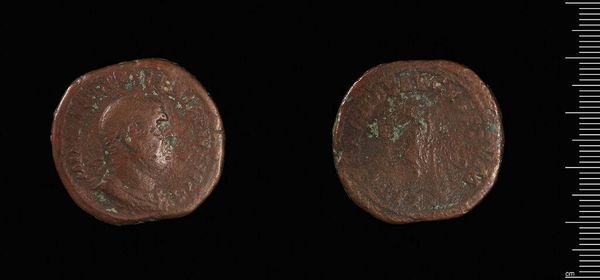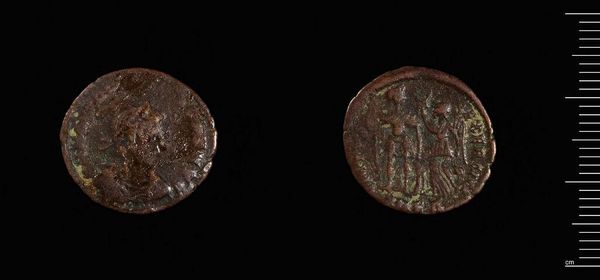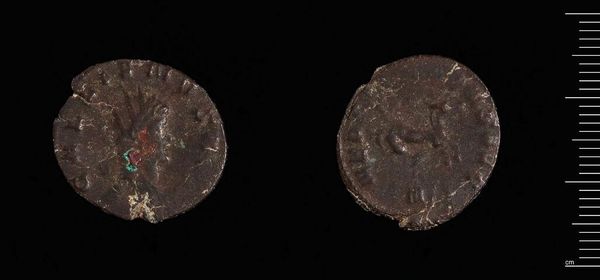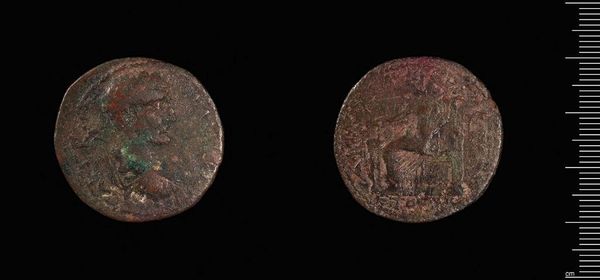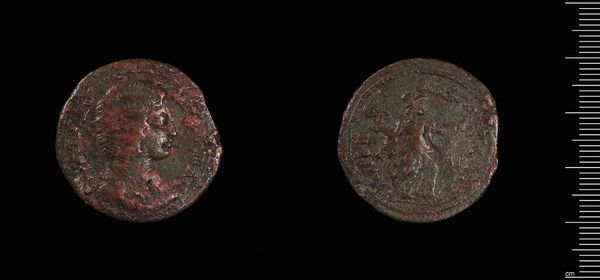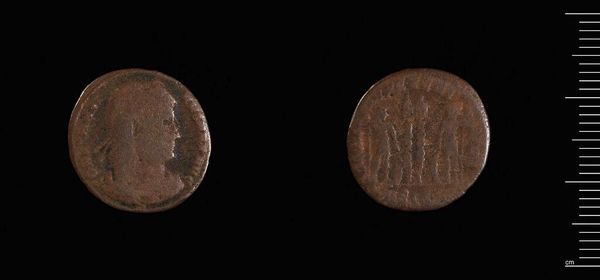
Dimensions: 2.4 g
Copyright: CC0 1.0
Curator: Here we have an Antoninianus of Tetricus II, a small coin held in the Harvard Art Museums. The coin, made of bronze, feels incredibly worn, doesn't it? Editor: Indeed. It speaks of its age and journey, hinting at the hands it passed through and the pockets it resided within. I am curious about what economic and social power this object conveyed to its users during that time. Curator: Absolutely. As a coin issued by Tetricus II, who briefly co-ruled the breakaway Gallic Empire, it represents not just currency, but a claim to legitimacy and sovereignty during a period of intense political fragmentation. Editor: I see the imperial portrait on the obverse and what looks like a figure on the reverse. The wear obscures the details, yet somehow that erosion contributes to its narrative. It's a tangible link to the economic infrastructure of a volatile empire. Curator: Exactly. The coin offered a material, if small, form of belonging to the people. These objects acted as propagators for particular imperial ideologies. Editor: Considering its humble composition and form, it’s amazing how powerfully this little coin demonstrates the intricate connection between political power and everyday life. Curator: It really is, reminding us how even the smallest of objects can speak volumes about identity and power.
Comments
No comments
Be the first to comment and join the conversation on the ultimate creative platform.
